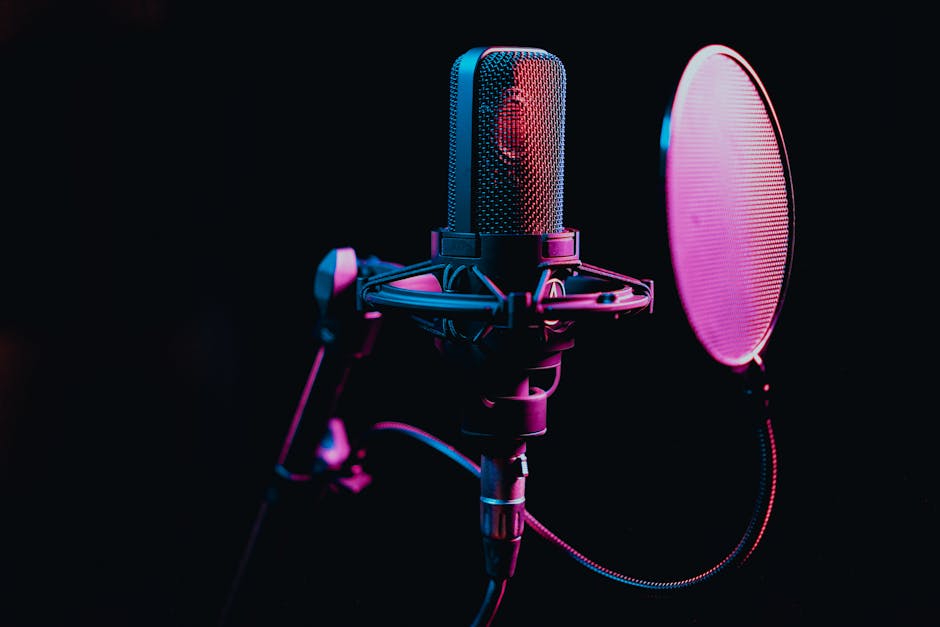My Experience with Dynamic Processors (compressors, Limiters) for Audio.
My Experience with Dynamic Processors (Compressors, Limiters) for Audio
Ah, dynamic processors. For many of us stepping into the world of audio production, these tools initially feel like a dark art, shrouded in mystery and complex terminology. When I first encountered compressors and limiters, my head spun with talk of thresholds, ratios, attack, and release times. What did they actually do? More importantly, how could I use them to make my music sound better, punchier, and more professional? This isn’t a theoretical guide; it’s a personal chronicle of my journey, the frustrations, the “aha!” moments, and the evolving understanding I’ve gained over years of trial and error with these indispensable tools.
The Initial Dive into Dynamic Control: Overwhelm and the Search for “Punch”
My first encounters with dynamic processors were, to put it mildly, confusing. I’d read articles and watched tutorials where seasoned engineers would effortlessly dial in settings, transforming dull tracks into vibrant, energetic sonic landscapes. My own attempts, however, often resulted in either squashed, lifeless audio or barely perceptible changes. I was chasing elusive terms like “punch,” “glue,” and “fatness,” convinced that compressors held the secret, yet every knob turn felt like a shot in the dark.
I remember one of my earliest projects – a rock track with drums that sounded thin and vocals that kept jumping out of the mix. I loaded up a compressor plugin on the vocal track, set the ratio to something aggressive like 10:1 (because “more is better,” right?), slammed the threshold down, and was immediately met with a harsh, distorted mess. The drums fared no better; my attempt to make them “punchier” just made them sound like they were suffocating. It was clear I was missing something fundamental. I was treating the compressor like a magic wand, hoping it would instantly fix everything, rather than understanding its actual purpose: managing the dynamic range of an audio signal.
Grappling with the Parameters: Threshold, Ratio, Attack, Release
The individual parameters themselves felt like separate puzzles. The threshold seemed straightforward enough – where the compression kicked in. But then came the ratio, which determined how much compression occurred. What was the difference between 2:1 and 4:1 in practical terms? Then there were attack and release – the speed at which the compressor reacted. Fast attack, slow attack? Fast release, slow release? Each combination created a subtly different sonic texture, and without a clear understanding of what I was listening for, it was easy to get lost. My early approach was often to just cycle through presets, hoping one would magically fit, which rarely yielded truly professional results. This period was characterized by frustration, endless tweaking, and a growing respect for engineers who seemed to intuitively understand these tools.
My Breakthrough Moments: When Compression Started Making Sense
The turning point didn’t come from reading another article; it came from focused experimentation and, crucially, listening. One day, I decided to isolate a single vocal track, and instead of trying to make it “sound good” immediately, I focused purely on hearing what each parameter did. I exaggerated settings, listening for the artifacts, and then pulled back, trying to find the sweet spot.
My first major “aha!” moment was understanding gain reduction. It wasn’t just about making things quieter; it was about controlling the loudest parts so that the quieter parts could be brought up without clipping. Seeing the gain reduction meter dance in response to the signal, and then compensating with make-up gain, suddenly made the compressor’s function concrete. I realized it was a dynamic volume fader, automating level adjustments far more precisely than I ever could with my hand.

Another revelation came with attack and release times. I started to grasp that these weren’t just arbitrary numbers, but powerful tools for shaping transients and sustain. A fast attack could clamp down on the initial hit of a drum, making it sound tighter, while a slower attack could let that initial punch through before catching the sustain. Conversely, a fast release could make the compressor sound aggressive and pumpy, while a slower release could create a smoother, more transparent control. This understanding opened up a whole new world of sonic sculpting, moving beyond mere level control to actual sound design.
Crafting Sound: My Go-To Applications for Compressors Across the Mix
With a foundational understanding in place, I began to develop specific strategies for using compressors across different elements of my mixes. It stopped being a generic “make it louder” tool and became a surgical instrument for shaping individual sounds and gluing entire sections together.
Vocals: Consistency and Intimacy
For vocals, consistency is key. My typical approach involves a moderate ratio (2:1 to 4:1) with a relatively quick attack and a release timed to the rhythm of the vocal performance. The goal isn’t to squash the life out of it, but to gently rein in the loudest phrases and lift the quieter ones, ensuring the vocal sits consistently in the mix. I often use two compressors in series: one for subtle peak control and another for a bit more character or density. This basic mixing technique has been invaluable.
Drums: Punch, Sustain, and Taming Transients
Drums are where compressors truly shine for me. On the kick drum, I often use a slower attack to let the initial “thwack” through, followed by a fast release to reset quickly for the next hit, enhancing punch. For the snare, a faster attack and moderate release can help control the crack and add sustain. On the drum bus, parallel compression (sending the drum bus to an auxiliary track with heavy compression and blending it back in) became a game-changer for adding density and excitement without losing dynamics. It’s like having the best of both worlds: the uncompressed punch and the compressed fatness.
Bass: Foundation and Definition
A well-compressed bass guitar or synth bass provides the solid foundation every mix needs. I usually opt for a medium attack and release, with a moderate ratio, to ensure the bass is present and even throughout the song, never disappearing in quieter sections or overpowering in louder ones. This helps it sit perfectly with the kick drum, creating a cohesive low end.
Mix Bus: The “Glue”
Applying gentle compression to the entire mix bus is one of my favorite finishing touches. Here, subtlety is paramount. A very low ratio (1.5:1 to 2:1) and a slow attack and release often work best. The goal is not to make the mix louder, but to subtly “glue” all the elements together, making them sound like they belong in the same space. It’s a delicate balance, and often, only a few dB of gain reduction at most are needed to achieve that cohesive feel. This is where my understanding of mastering audio for beginners really began to solidify.
The Limiter’s Place: My Approach to Loudness, Clarity, and Protection
While compressors are about shaping dynamics, limiters, in my experience, are primarily about preventing peaks and achieving perceived loudness, particularly at the mastering stage. My journey with limiters started with a simple desire: “make it loud.” This led to many early masters that were loud but lacked dynamic impact and often sounded harsh or distorted.
I quickly learned that a limiter isn’t just a “volume knob to 11.” Its primary function is to catch any signal peaks that exceed a specific threshold (often 0 dBFS or slightly below), preventing digital clipping. This is crucial for creating a master that translates well across different playback systems.
Balancing Loudness with Dynamic Integrity
My current approach to limiting is far more nuanced. Instead of pushing for maximum loudness at all costs, I focus on finding the sweet spot where the track sounds loud and competitive without sacrificing its punch or depth. This often means aiming for an output level of -0.5 dBFS or even -1 dBFS, allowing a tiny bit of headroom, rather than slamming it against 0 dBFS. I pay close attention to the gain reduction meter on the limiter, trying to keep it minimal – perhaps 1-3 dB of reduction at peak moments. Any more than that, and I’ll usually go back to the mix or the preceding compressor stages to see if I can better manage dynamics there.
I’ve also learned the importance




Post Comment